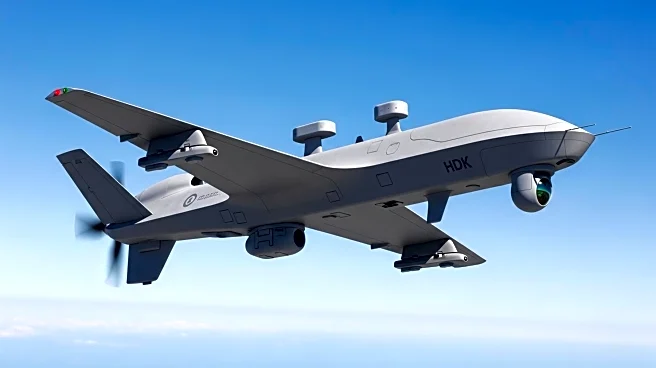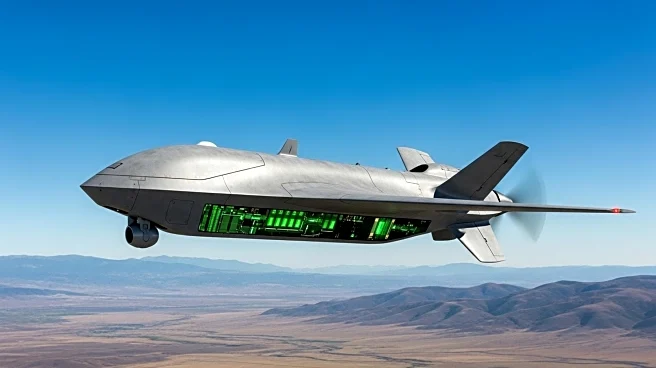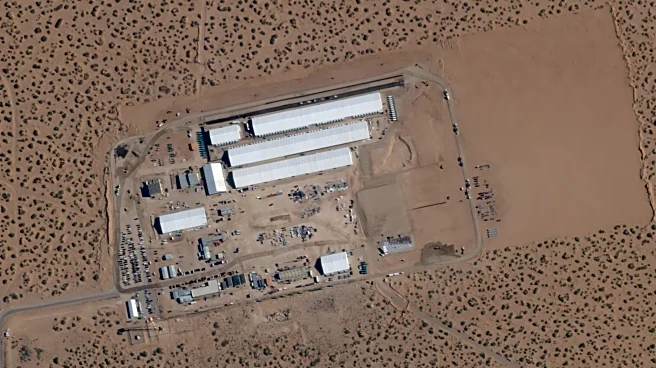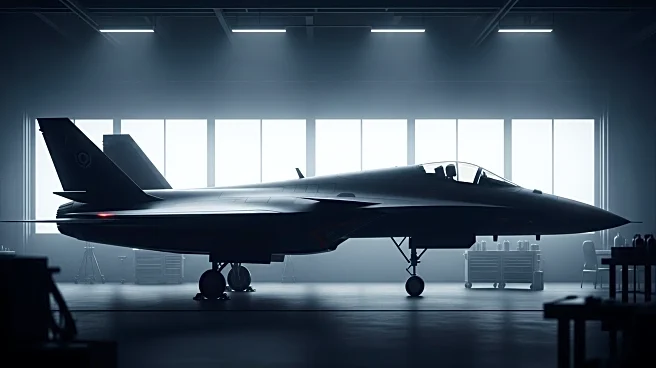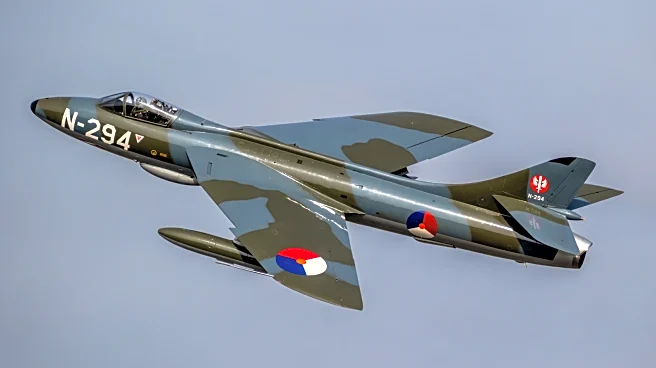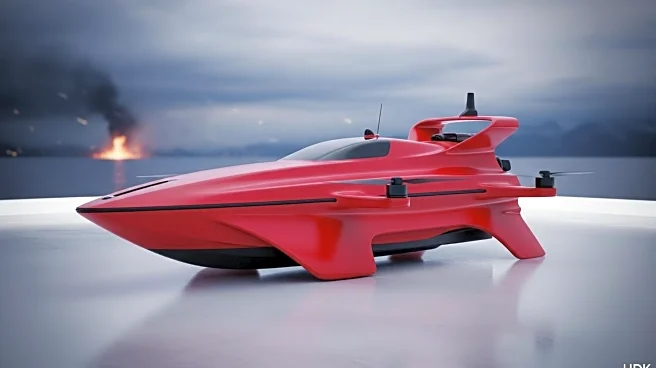What's Happening?
General Atomics has successfully conducted the first flight test of its collaborative combat aircraft, the YFQ-42A, in partnership with the U.S. Air Force. The test took place at Gray Butte Airport in California, a site known for the development and testing of Predator and Reaper drones. The YFQ-42A is an evolution of the XQ-67A Off-Board Sensing Station drone, which first flew last year. This milestone was highlighted by Air Force Secretary Troy Meink, who emphasized the rapid transition from concept to flight, showcasing the potential of innovative acquisition processes. The program, which began less than two years ago, aims to enhance combat capabilities through human-machine teaming. The drones will undergo further testing at Edwards Air Force Base and operational assessments at Nellis Air Force Base before deployment. The Air Force plans to base these drones at Beale Air Force Base, California, for global deployment.
Why It's Important?
The successful flight of General Atomics' collaborative combat aircraft marks a significant advancement in military drone technology, potentially reshaping air-to-air combat strategies. These drones are designed to support fighter jets by carrying additional rounds, thereby extending their operational reach and effectiveness. The program's rapid development underscores the Air Force's commitment to integrating cutting-edge technology into its arsenal, enhancing the U.S. military's strategic capabilities. The substantial funding injection into the program, totaling nearly $800 million for 2026, reflects the importance placed on these drones in future combat scenarios. The decision to potentially produce both General Atomics and Anduril's prototypes could lead to diversified capabilities and increased competition, driving innovation and cost-effectiveness.
What's Next?
Following the initial flight tests, the Air Force will conduct further evaluations to determine the performance and capabilities of the drones. A production decision is expected in fiscal 2026, which will decide whether one or both prototypes will be manufactured. The Air Force has hinted at a preference for affordable mass production, suggesting future increments may focus on cost-effective solutions. The outcome of these tests will influence procurement strategies and the scale of production, impacting the operational deployment of these drones in various combat scenarios.



